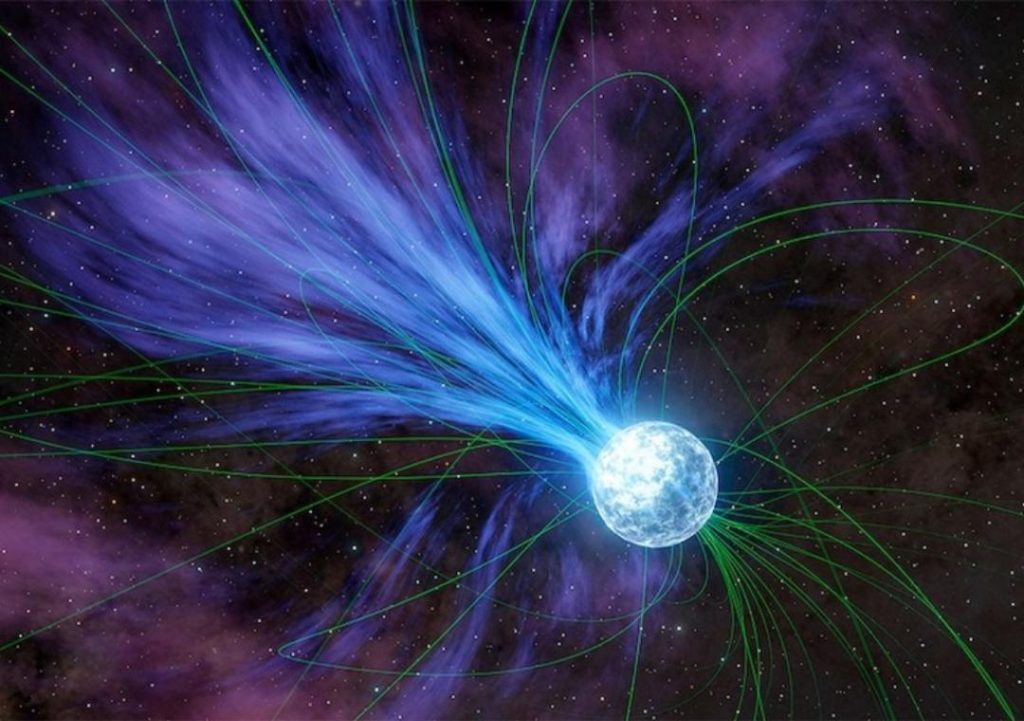
Gold & Platinum Created through Neutron Stars’ Explosions: Study
For centuries, humans have been fascinated by the origins of precious metals like gold and platinum. Despite being one of the most widely used and coveted materials, the exact process of how these metals came to be has remained a mystery. However, a recent study led by Columbia University student Anirudh Patel has shed light on this long-standing question, revealing that magnetars, or highly magnetized neutron stars, played a crucial role in creating these elements through explosive events.
According to the study, magnetars exploded and released flares that contained gold and platinum over 20 years ago. This cosmic event, which occurred in the Milky Way, is not a rare occurrence. In fact, magnetars are estimated to explode approximately once per decade in the Milky Way, and annually across the observable universe.
So, how did scientists uncover this groundbreaking information? The study relied on data collected by NASA’s Fermi Gamma-Ray Space Telescope, which has been monitoring the universe for high-energy radiation since 2008. By analyzing the telescope’s data, researchers were able to identify a specific pattern of gamma-ray bursts, which are intense explosions of energy that occur when a massive star collapses or when a magnetar undergoes a catastrophic event.
The study focused on a particular event known as GRB 130427A, which was detected by Fermi in 2013. This event was remarkable not only for its intensity but also for the unusual signature of gamma rays it emitted. Researchers found that the burst was accompanied by a unique pattern of gamma-ray pulses, which are thought to be indicative of the presence of gold and platinum.
To better understand the significance of these findings, it’s essential to delve into the physics behind magnetars and their explosions. Neutron stars are incredibly dense objects that are formed when a massive star undergoes a supernova explosion. These objects are characterized by their extremely strong magnetic fields, which are so powerful that they can influence the behavior of nearby matter.
Magnetars are a specific type of neutron star that is distinguished by its extremely strong magnetic field. This field is so powerful that it can cause the star to heat up and eventually explode, releasing a massive amount of energy in the form of gamma rays.
The study’s findings have significant implications for our understanding of the origins of gold and platinum. Traditionally, these elements were thought to have been created in the hearts of stars through nuclear reactions. However, this process is not efficient enough to produce the large quantities of gold and platinum that we see today.
The explosion of a magnetar, on the other hand, provides a more plausible explanation for the creation of these elements. When a magnetar explodes, it releases a massive amount of energy that is thought to be responsible for the creation of heavy elements like gold and platinum. These elements are forged in the intense heat and radiation of the explosion, which is thought to be similar to the conditions found at the heart of a star.
The study’s findings have also raised questions about the potential for magnetars to create other heavy elements, including the rare earth elements that are so crucial to modern technology. While the study did not specifically investigate the creation of these elements, it’s possible that magnetars could play a role in their formation.
In conclusion, the study led by Anirudh Patel has shed new light on the origins of gold and platinum, revealing that magnetars played a crucial role in their creation through explosive events. This research has significant implications for our understanding of the universe and the processes that shape it. As scientists continue to study the universe, we may uncover even more surprising secrets about the origins of the elements that make up our world.






